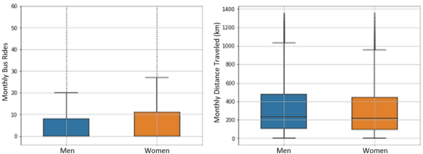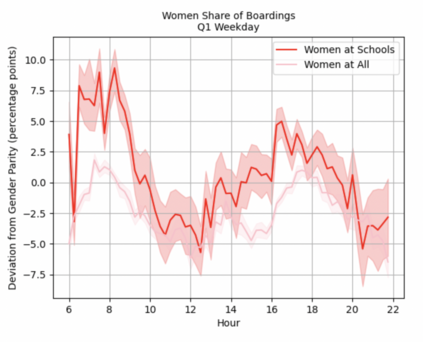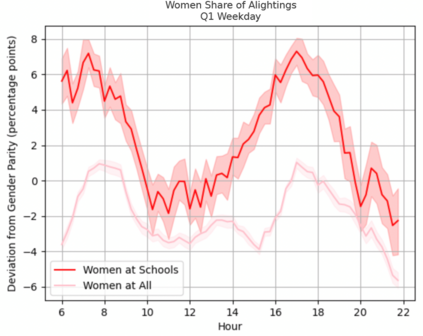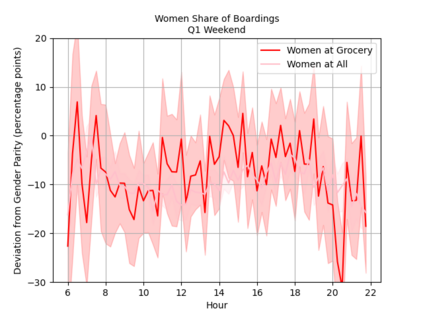There are substantial differences in travel behavior by gender on public transit. Studies have concluded that these differences are largely attributable to household responsibilities typically falling disproportionately on women, leading to women being more likely to utilize transit for purposes referred to by the umbrella concept of "mobility of care". In contrast to past studies that have quantified the impact of gender using survey and qualitative data, we propose a novel data-driven workflow utilizing a combination of previously developed origin, destination, and transfer inference (ODX) based on individual transit fare card transactions, name-based gender inference, and geospatial analysis as a framework to identify mobility of care trip making. We apply this framework to data from the Washington Metropolitan Area Transit Authority (WMATA). Analyzing data from millions of journeys conducted in the first quarter of 2019, the results of this study show that our proposed workflow can identify mobility of care travel behavior, detecting times and places of interest where the share of women travelers in an equally-sampled subset (on basis of inferred gender) of transit users is 10% - 15% higher than that of men. The workflow presented in this study provides a blueprint for combining transit origin-destination data, inferred customer demographics, and geospatial analyses enabling public transit agencies to assess, at the fare card level, the gendered impacts of different policy and operational decisions.
翻译:研究结论认为,这些差异主要归因于家庭责任通常不成比例地落在妇女身上,导致妇女更有可能利用过境达到“护理流动”这一总括概念所指的目的。 与以往利用调查和定性数据量化了性别影响的研究相比,我们建议采用新的数据驱动工作流程,利用以前开发的原产地、目的地和转移推断(ODX)的组合,利用以往开发的原产地、目的地和地点,利用个人过境票价交易、以姓名为基础的性别推断和地理空间分析,作为确定护理旅行流动性的框架。我们将这一框架应用于华盛顿市区过境管理局(WATA)的数据。 分析2019年第一季度进行的数百万次旅行的数据,研究结果表明,我们拟议的工作流程可以确定护理旅行行为的流动性,查明在过境用户中,女性旅行者在同样抽样(根据推断性别)中的比例比男性高出10%至15%。 本研究提出的工作流程为将客户的地理空间动态分析、分析、不同业务背景和统计层面的性别分析提供了一个蓝图,从而能够将客户的地理空间分析、不同程度、不同程度的地理空间分析、统计数据与远处的数据进行综合。





















